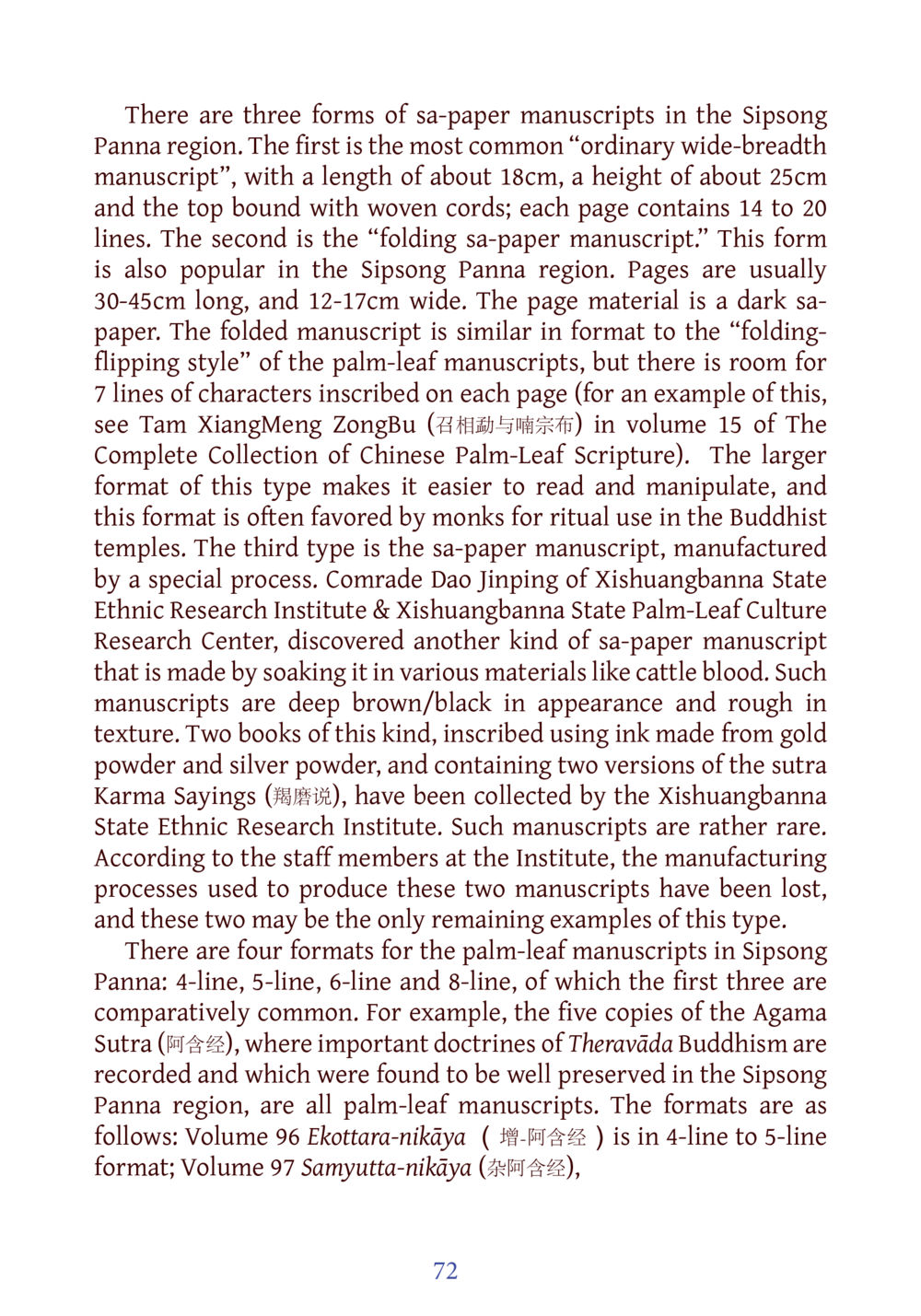Forms of Sa-Paper Manuscripts in Sipsong Panna : หน้า 93/141
DIRI Journal : หน้า 93/141 Explore the various forms of sa-paper manuscripts in the Sipsong Panna region, including ordinary wide-breadth, folding manuscripts, and unique varieties made with special materials.
0 ครั้ง

สรุปเนื้อหา
In the Sipsong Panna region, there are three main forms of sa-paper manuscripts. The first, the ordinary wide-breadth manuscript, measures about 18cm x 25cm and has 14 to 20 lines per page. The second is the popular folding sa-paper manuscript, measuring 30-45cm long and 12-17cm wide, allowing for 7 lines of inscriptions, commonly used by monks for rituals. The third type is rare and crafted through unique processes, including soaking in materials like cattle blood, resulting in deep brown/black manuscripts inscribed with gold and silver ink. Additionally, various formats of the palm-leaf manuscripts exist, including 4-line to 8-line formats, with notable examples found in the region.
หัวข้อประเด็น
-sa-paper manuscripts
-Buddhist manuscripts
-Sipsong Panna region
-manufacturing processes
-palm-leaf manuscripts
ข้อความต้นฉบับในหน้า
หน้าหนังสือทั้งหมด













































































































































